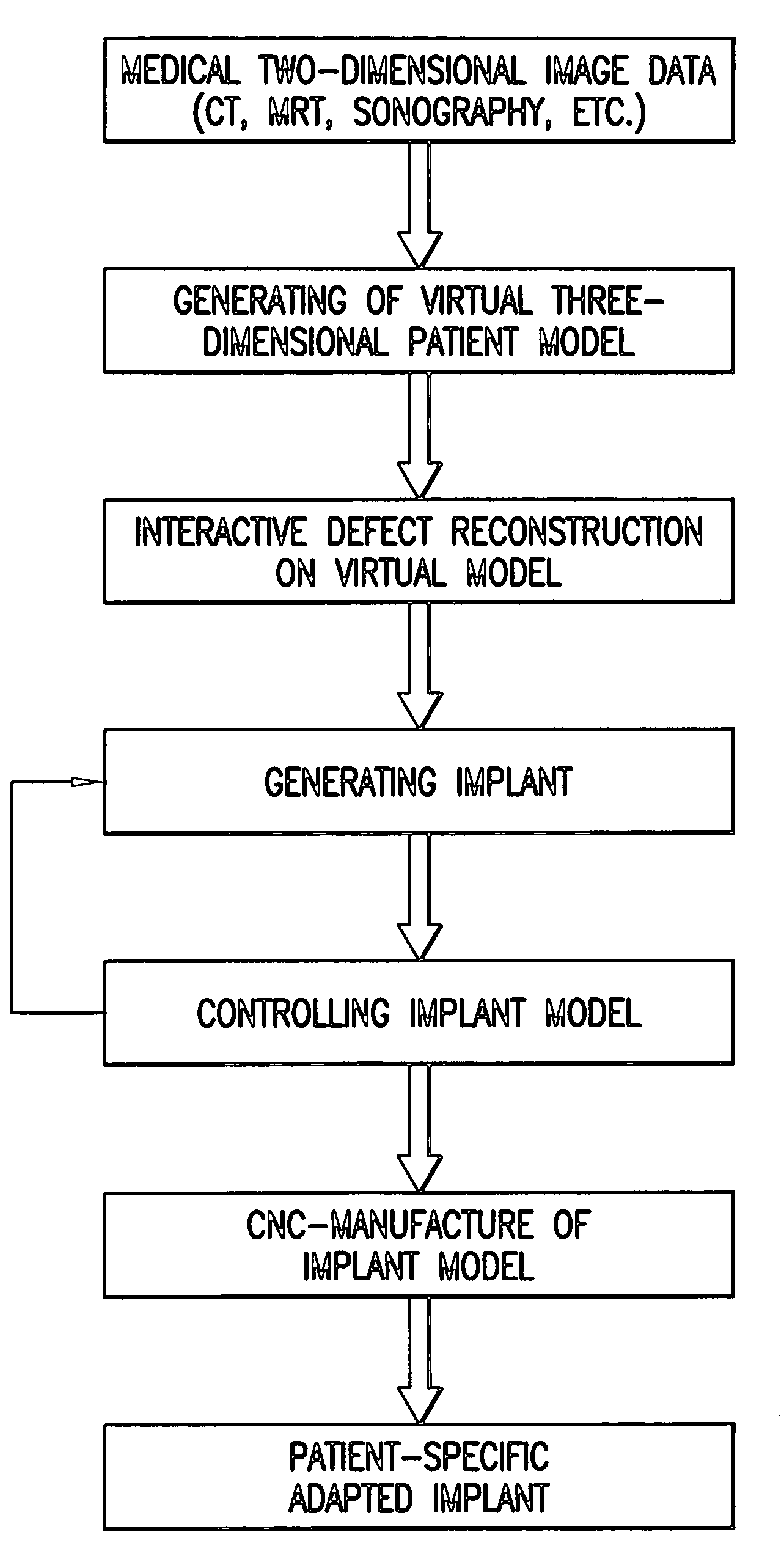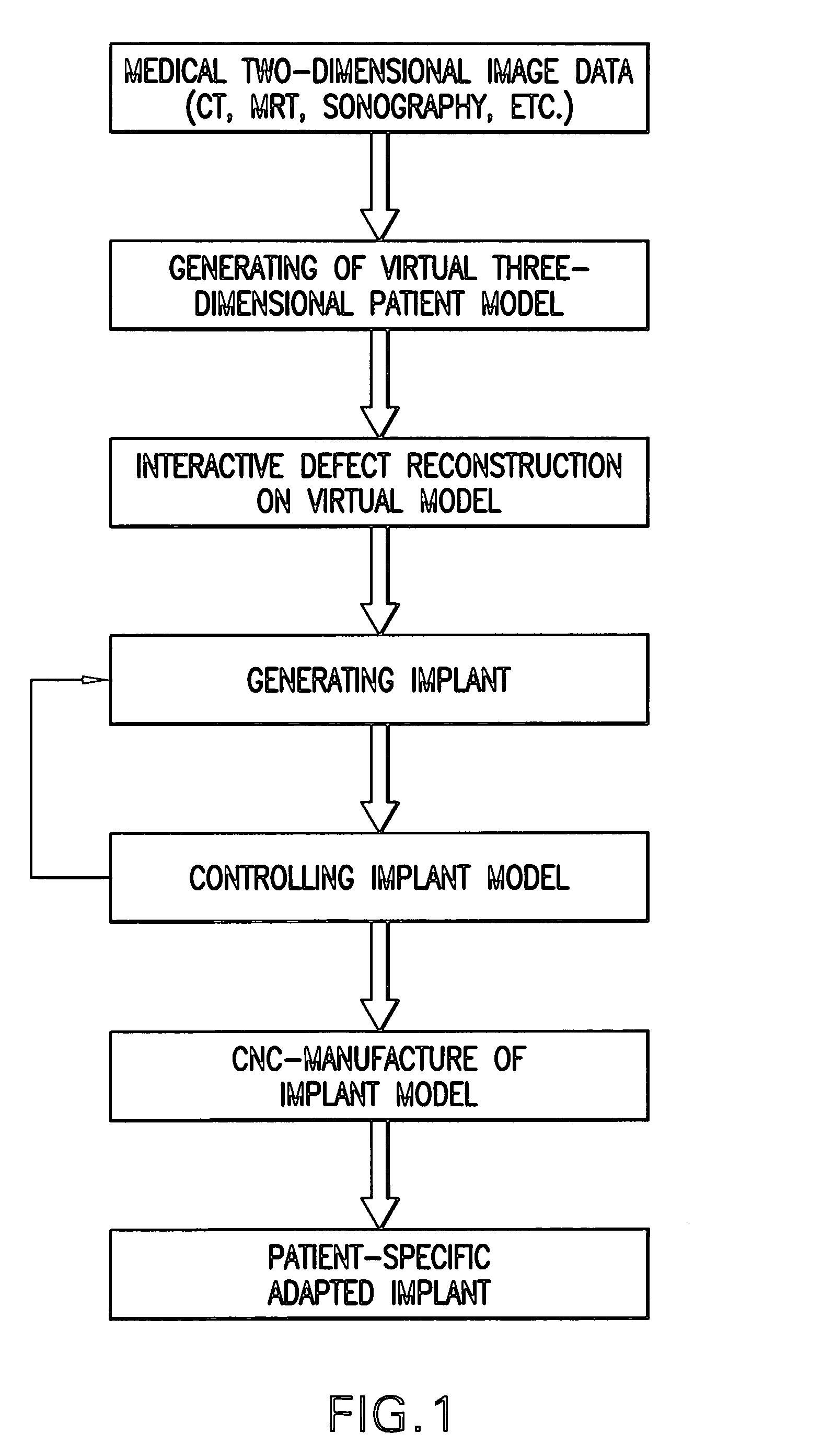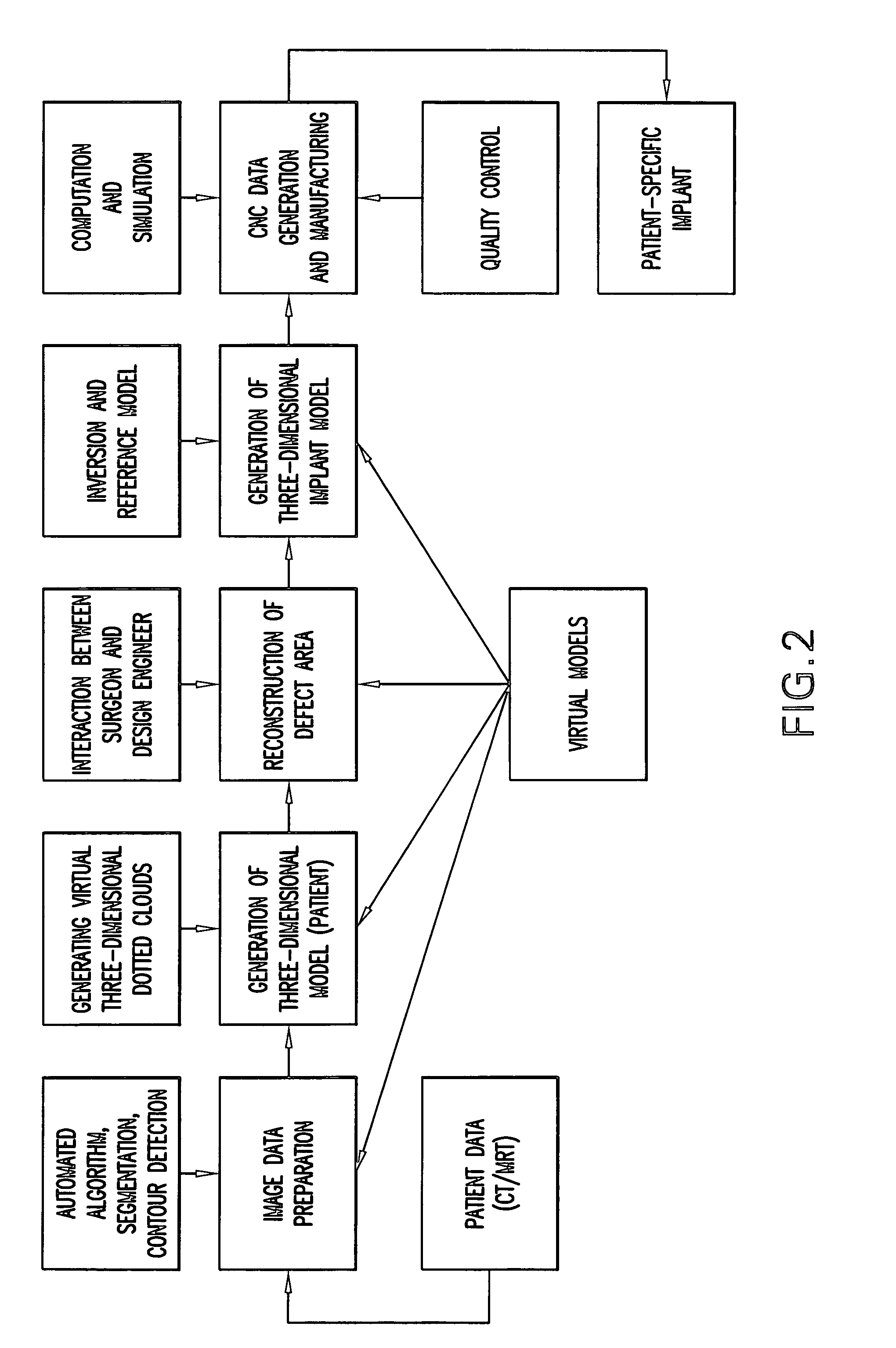Method for generating patient-specific implants
a technology for implanting and patient, applied in the field of patient-specific implants, can solve the problems of inability to carry out future special examination methods, scarcely possible to have a specific operation planning, and additional physical and psychological strain on the patient, so as to reduce time and routine schedule, accurate adaptation to the shape of the defect site, and short time
- Summary
- Abstract
- Description
- Claims
- Application Information
AI Technical Summary
Benefits of technology
Problems solved by technology
Method used
Image
Examples
Embodiment Construction
[0014]In the following, the invention will be explained in more detail by virtue of the embodiments by reference to the following drawings, in which:
[0015]FIG. 1 is a general view of the method according to the present invention,
[0016]FIG. 2 shows more detail of the general view of the method according to the present invention,
[0017]FIG. 3 shows the preparation of medical two-dimensional image data,
[0018]FIG. 4 shows the generation of a three-dimensional patient model,
[0019]FIG. 5 shows an inversion model,
[0020]FIG. 6 shows a three-dimensional reference model, and
[0021]FIG. 7 shows a three-dimensional implant model.
[0022]As an example, the case of a patient will be illustrated who has a complicated large area defect (for example, resulting from an accident, a tumor etc.) in the upper half of the cranium. In FIGS. 1 and 2 there are represented both, a general block diagrammatical overview and a detailed block diagrammatical overview to illustrate the method according to the present i...
PUM
 Login to View More
Login to View More Abstract
Description
Claims
Application Information
 Login to View More
Login to View More - R&D
- Intellectual Property
- Life Sciences
- Materials
- Tech Scout
- Unparalleled Data Quality
- Higher Quality Content
- 60% Fewer Hallucinations
Browse by: Latest US Patents, China's latest patents, Technical Efficacy Thesaurus, Application Domain, Technology Topic, Popular Technical Reports.
© 2025 PatSnap. All rights reserved.Legal|Privacy policy|Modern Slavery Act Transparency Statement|Sitemap|About US| Contact US: help@patsnap.com



